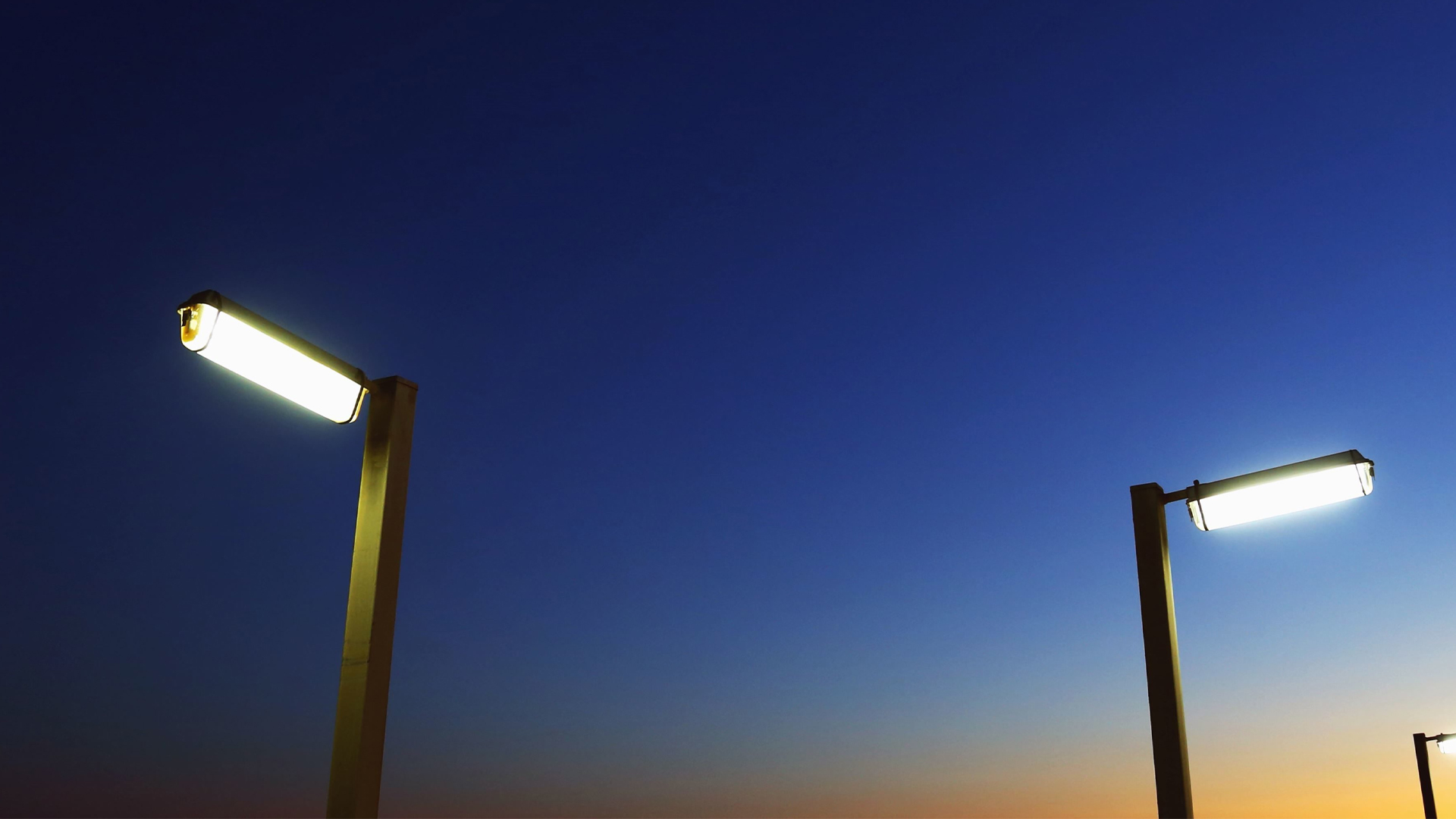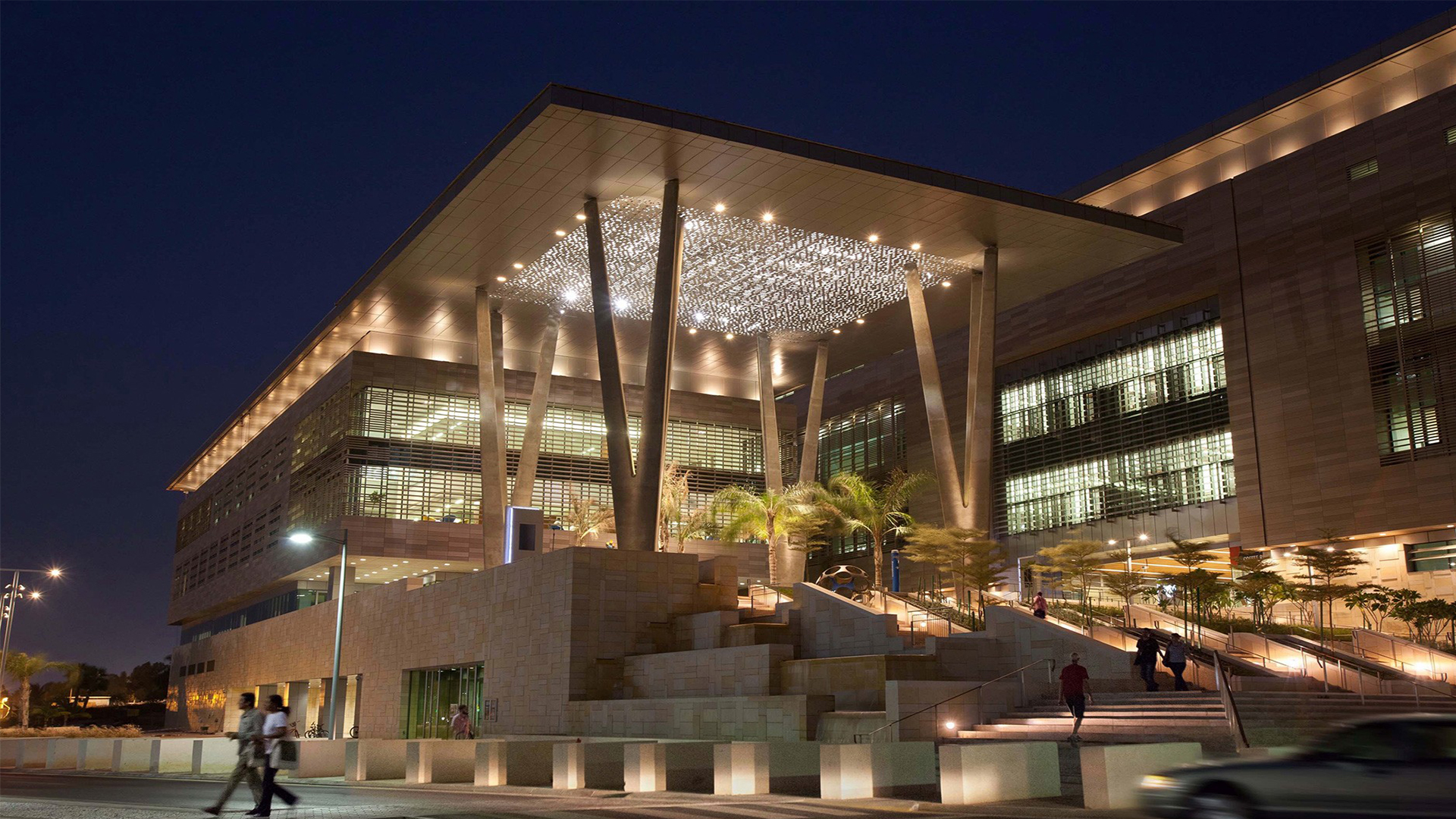FAQ
LED is a highly energy efficient lighting technology that has the potential to fundamentally change the future of lighting. It is a direct light source which means it can emit light in a specific direction unlike conventional lamps.
When compared to conventional lighting technologies, LED lights are known for having an exceptionally extended lifespan. The quality of the LED, the operating environment, and usage patterns are only a few of the variables that might affect an LED light’s longevity. However, the average lifespan of an LED light is estimated to be between 25,000 and 50,000 hours, if not even longer.
Picture an LED light with a predicted lifespan of 50,000 hours to put this in context. If used for 8 hours every day the LED light would last roughly about:
50,000 hours ÷ 8 hours per day = 6,250 days = (approximately 17 years before the LED light reaches its projected lifespan).
The lifespan of an LED light can be considerably increased if it is used for less hours per day or isn’t subjected to frequent on/off cycles.
The light output of an LED light degrades to a particular level, usually between 70 and 80 percent of its initial brightness, at which time it reaches the end of its useful life. The LED light will still work even after its anticipated lifespan, but over time, its light brightness can progressively decrease.
LEDs (Light-Emitting Diodes) are considered as green technology for many different reasons such as:
- Energy Efficiency: LEDs are highly energy-efficient compared to traditional lighting technologies. They can convert a higher percentage of electrical energy into visible light,
- resulting in less wasted energy in the form of heat. This leads to energy savings, reducing electricity consumption and greenhouse gas emissions associated with power generation.
- Long Lifespan: LEDs have a much longer lifespan than traditional light sources. They can last much longer. The extended lifespan reduces the need for frequent replacement, resulting in lower material waste and a reduced environmental impact.
- Reduced Environmental Impact: LED lights do not contain hazardous substances such as mercury, which is present in some other lighting technologies. The absence of mercury makes LEDs safer for both human health and the environment. And, the longer lifespan of LEDs reduces the number of light bulbs that end up in landfills which further minimizes waste.
- Improved Durability: LEDs are highly durable and resistant to shock, vibration, and temperature variations. This durability makes them suitable for various applications and environments, reducing the need for frequent replacements due to breakage or damage.
- Controllability and Dimming Capability: LEDs offer excellent control options, including dimming and instant on/off capabilities. This level of control allows for efficient use of light and the ability to adjust brightness levels as needed, further optimizing energy consumption.
- Design Flexibility: LED lighting is highly versatile in terms of design and form factors. LEDs can be arranged in different shapes and sizes, enabling creative lighting designs, improved aesthetics, and efficient lighting distribution. This versatility allows for tailored lighting solutions that minimize wasted light and enhance efficiency.
- Integration with Renewable Energy: LEDs can easily integrate with renewable energy sources such as solar power due to their low energy consumption and direct current (DC) compatibility. This integration promotes the use of clean energy and reduces reliance on fossil fuel-based electricity generation.
LED lights contain no toxic materials and are 100 percent recyclable. LEDs normally use less power for a given application compared to traditional halogen and fluorescent sources. As such, the overall kW/hr consumption per year is less, this helps reduce the overall CO2 emissions.
LED lights are up to 80% more efficient than fluorescent and incandescent lights. In fact, 95% of the energy in LEDs is converted into light while only 5% is wasted as heat. This is compared to fluorescent lights which convert 95% of energy to heat and only 5% into light. LED lights also draw much less power than traditional lighting. For example, a typical 84 watt fluorescent can be replaced with a 36 watt LED to give the same level of light. This upgrade means less energy use which leads to less electric bills.
We all know that when it comes to energy efficiency, durability, and performance, LED lights are the best lighting option available in the market. Another advantage of using LED lights is that it benefits our health. A few of these benefits are mentioned below:
- No UV & mercury free.
- Helps align/balance circadian rhythm.
- Helps decrease headaches.
- Increases productivity and learning performance.
- Reduces stress and anxiety.
- Produces less heat
- Better sleep
Wattage refers to the rate at which electrical power is consumed or produced. wattage measures how quickly energy is used or transferred. It represents the amount of work done per unit of time. One watt is equal to one joule of energy per second. For example, if a device consumes 100 watts of power, it is using 100 joules of energy every second.
Wattage is commonly used to describe the power consumption or power output of various electrical devices and systems. It helps to determine the energy requirements, efficiency, and electrical capabilities of appliances, electronics, lighting, motors, and other electrical equipment.
CRI stands for Color Rendering Index. It is a measure used to assess a light source’s capacity to replicate colours properly in comparison to a reference light source, usually an incandescent bulb or the sun’s rays. Higher scores on the CRI scale, which ranges from 0 to 100, indicate better colour rendering. The way that light affects the appearance of colours is known as colour rendering, which enables humans to recognize and identify different tints and hues. The CRI compares the appearance of a set of standard colour samples under the test light source to their appearance under the reference light source in order to determine the colour fidelity of a specific light source.\
When the CRI is high, colours are precisely and strongly reproduced, nearly approximating how they would appear under the reference light source. A low CRI number, on the other hand, suggests that colours may seem distorted or less bright when illuminated by the test light source.
In places like art galleries, retail stores, museums, photographic studios, and healthcare facilities where colour accuracy is essential, CRI is particularly significant. To enjoy artwork, assess items, assess medical issues, or maintain constant colour matching in these settings, it is essential to appropriately detect colours.
A metric called colour temperature is used to characterize how a light source’s output appears to be coloured. It is measured in Kelvin (K). It is a means to put a number on the colour properties of light, especially in terms of how warm or cold it is.
In simple terms, it tells us whether the light is seen as warm (more yellow or orange) or cool (more blue). Colour temperature is measured using the Kelvin scale, which has low values for warm light and high values for cold light.
Since LED lights are available in various color temperatures, allowing for a wide range of lighting options, therefore it’s crucial to choose the right one for the particular lighting application. The ambience, visual comfort, and practicality of a room may all be affected by the colour temperature decision.
It is useful to take the intended use of the lighting and the desired ambiance into account when choosing LED lights. Cooler white light is ideal for jobs that call for focus and clarity of vision, whereas warm white light is frequently selected for creating a comfortable, cozy and soothing environment. Between the two, neutral white light may be used in a number of scenarios.
By understanding colour temperature and taking into account the specific requirements of the area or work makes it simpler to choose LED lights that produce the appropriate lighting effect and satisfy the environmental criteria.
Here are some common color temperature ranges for LED lights:
- Warm White (2700K-3000K)
- Neutral White (3500K-4000K)
- Cool White (5000K-6500K)
Lumens are a unit of measurement used to determine how much overall visible light a source emits. It is a measurement of a light source’s brightness or light output as seen by the human eye.
LED lighting is known for its high lumen output and energy efficiency, which translates to the ability to provide a significant amount of light while using less electricity than regular incandescent bulbs.
It is usually common to take into account the lumen output necessary to provide the appropriate brightness level when selecting lighting for various purposes. The right brightness level should be chosen based on the room’s size, the lighting’s intended use, and the atmosphere that is wanted.
Luminous efficacy measures how efficiently a light source produces visible light. It measures how much light is produced in relation to how much power or energy the light source uses. Lumens per watt (lm/W), which expresses the number of lumens generated per watt of electrical power consumed, are a common unit of measure for luminance efficacy.
A higher luminous efficacy indicates greater energy efficiency since it implies the light source generates more lumens of light per watt of power it uses.
Compared to conventional incandescent bulbs and fluorescent lights, LED (light-emitting diode) lighting is known for its high luminous effectiveness. LEDs may generate more than 100 lumens of light for every watt of electricity they use, or luminous efficacies of over 100 lm/W. In comparison, fluorescent lights vary from 50 to 100 lm/W, whereas incandescent bulbs generally have luminous efficacies of 10 to 20 lm/W.
Individuals as well as organizations may choose their lighting options more effectively by taking the needed amount of brightness and the application’s energy efficiency needs into consideration when evaluating the luminous effectiveness of various light sources. Higher luminous efficacy not only adds to energy savings but also to the sustainability of lighting systems by lowering greenhouse gas emissions.
It is a measurement that specifies the width of the light beam and establishes the coverage area or direction of the light’s projection. The angle between the two places on each side of the light beam when the intensity of the light is lowered to a specific percentage of its maximum is commonly referred to as the beam angle.
In the lighting sector, the term “L80” is used to describe the expected lifespan or lumen maintenance of an LED lighting product. The estimated time it takes for an LED light source to attain 80% of its original lumen output is expressed using a standardized approach.
L80, or loss to 80% of original brightness, is the point at which an LED light source is regarded as having declined. This implies that even though the LED will still be operational after the declared L80 lifespan, its light output will have dropped to 80% of its initial level.
L80 is often accompanied by a number that represents the anticipated lifespan in hours. For instance, if an LED product has a L80 rating of 50,000 hours, it signifies that the manufacturer believes the LED will continue to provide at least 80% of its initial lumen output for that long.
The MacAdam ellipse is a graphical tool for describing and quantifying colour differences or changes within a collection of light sources or colour coordinates. It is a plotted pattern of ellipses on a colour diagram that helps in visualizing the sense of colour differences. Each ellipse indicates a range of hues that within a given tolerance, are thought to be perceptually uniform or impossible to discriminate from a reference hue.
In the lighting business, the MacAdam ellipse idea is essential, especially for applications that require colour consistency, such as architectural lighting, product displays, and color-critical situations. It assists manufacturers and designers in making sure that the manufactured light sources give consistent and accurate colour rendering and fulfil particular colour quality criteria.
Red, Green, and Blue Light-Emitting Diode is referred to as RGB LED. It describes a kind of LED lighting in which a single LED package houses red, green, and blue light sources. By varying the intensity of each particular colour, produce light in these three fundamental colours, enable the development of a broad variety of colours.
RGB LED lighting is designed on the additive colour mixing principle. Different colour combinations may be created by altering the intensity or brightness levels of the red, green, and blue components. For instance, combining red, green, and blue light at their maximum intensities produces white light, however varying the strength of each colour can result in a variety of colours.
IP stands for Ingress Protection. IP ratings refer to the classifications given to lights when they are tested for protection against solid objects (dirt, dust) and water. The 1st digit represents dust and the 2nd digit represents water. The higher the digits, the better the level of protection. It is an important consideration during the selection of LED lighting products for any project. The IP rating reflects the suitability of the light fitting to specific environmental conditions in indoor and outdoor installations.
Yes, LED lights work with dimmer switches, however it depends on which LED bulbs are utilized and which dimmer switches are in use. It’s essential to invest in dimmable LED bulbs if you intend to use them with a dimmer control because not all LED lights are dimmable.
When used with suitable dimmer switches, dimmable LED bulbs enable you to change the brightness levels to your preferred settings.
When comparing LED (Light Emitting Diode) and Compact Fluorescent (CFL) lighting technologies, LED is generally considered to be a better option for several reasons:
Energy efficiency
Lifespan
Instantaneous Start
Durability
Environmental impact
Dimming capability
Light Quality
Instant Restrike
A track installed on a wall or ceiling allows for the positioning and illumination of adjustable light fixtures. Track lighting is a type of lighting system. It offers a variable and adaptable lighting system that enables the adjusting and customizing of light placement to suit various lighting requirements.
The usage of track lighting is widespread in retail, commercial, and residential contexts. It is frequently selected because of its adaptability and versatility since it makes it simple to reorganize and modify the lighting system as demands and tastes change over time. It is especially well-liked for showcasing artwork, emphasizing architectural details, or illuminating particular regions or items inside a space.
Accent lighting refers to a type of lighting design strategy that draws focus to or emphasizes particular items, places, or architectural aspects within a room. It is utilized to provide depth, visual intrigue, and enhance the environment’s overall aesthetics.
Accent lighting’s main objective is to produce focused illumination on specific components in order to provide an eye-catching centerpiece or to create drama and a certain atmosphere. By shining light on particular items or locations while leaving the surrounding area relatively dark, it serves to generate contrast.
Task lighting is a term used to describe a sort of lighting that is especially created and placed to give concentrated illumination for carrying out particular jobs or activities. By delivering strong and focused light in locations where detailed work is done, it seeks to improve vision and lessen eye strain. Task lighting is frequently utilised in a variety of locations, including residences, workplaces, workshops, and other places of business.
The goal of task lighting is to provide light in certain places where tasks like reading, writing, cooking, creating, or using a computer are performed. Compared to ordinary ambient lighting, which illuminates a space evenly, it is often brighter and more focused. Several types of light sources, including as desk lamps, track lights, pendant lights, and under-cabinet lights, can be used to create task lighting.
When thinking about task lighting, it’s essential to consider things like the kind of activity being done, the desired brightness level, and the particular needs of the person or place. Options for adjustable task lighting are advantageous since they let users adjust the light’s direction and intensity to fit their needs. In addition to increasing visibility, this kind of illumination boosts productivity and visual comfort across a range of tasks.
Ambient lighting is the complete illumination that creates overall visibility and establishes the overall feel or mood of an area. It serves as the main source of lighting in the space and is often soft and diffused to provide a welcoming mood. Ambient lighting gives the room a consistent amount of light and helps to get rid of sharp shadows.
There are many different kinds of ambient lighting sources that may be used, including track lighting, wall sconces, recessed lighting, and overhead lights. Additionally, the ambient lighting of a space may be enhanced by natural light coming in through windows or skylights.
Ambient lighting’s goals are to offer sufficient brightness for daily tasks and to foster a friendly atmosphere. It is frequently utilized as a foundational layer of lighting that may be enhanced with accent lighting and task lighting, which focuses the lighting used for particular tasks.
The mood of a room may also be affected by the colour temperature of ambient lighting. Cooler colour temperatures (about 5000–6500 Kelvin) may give more of an energizing and dynamic feeling, while warmer colour temperatures (around 2700–3000 Kelvin) tend to foster a cozy and soothing ambiance.
The entire lighting design of a room is greatly influenced by ambient lighting, which also improves the utility and aesthetics of the space.








